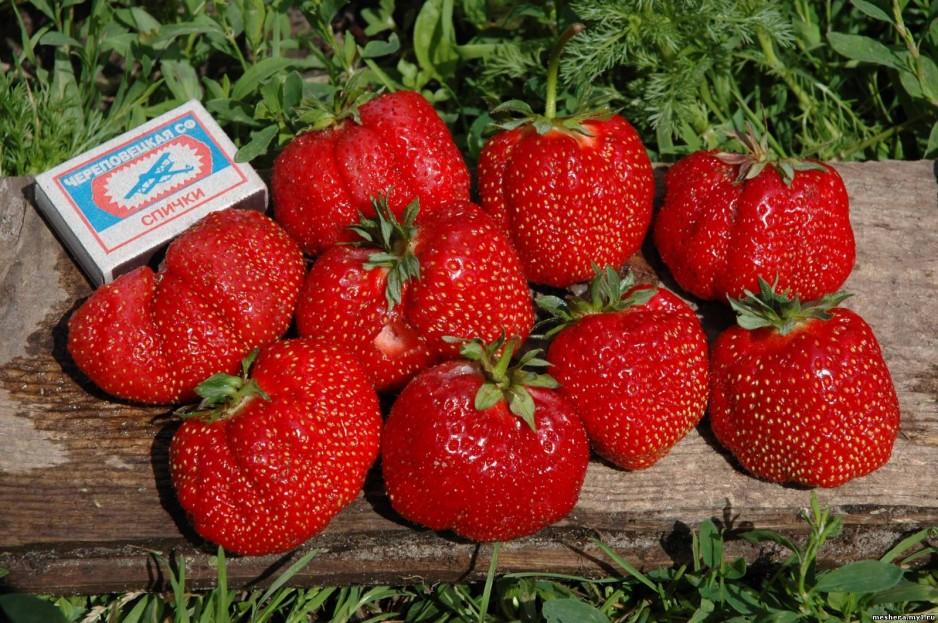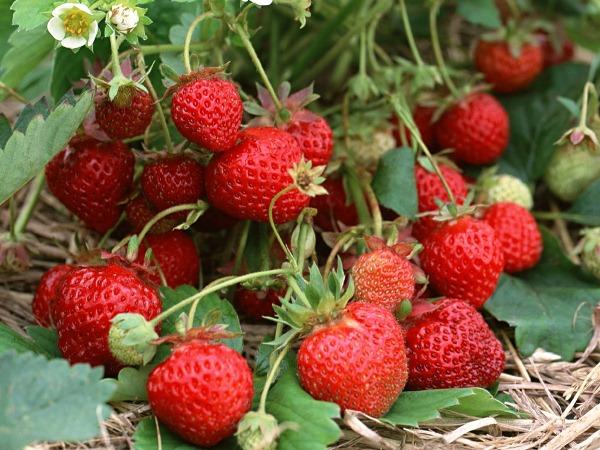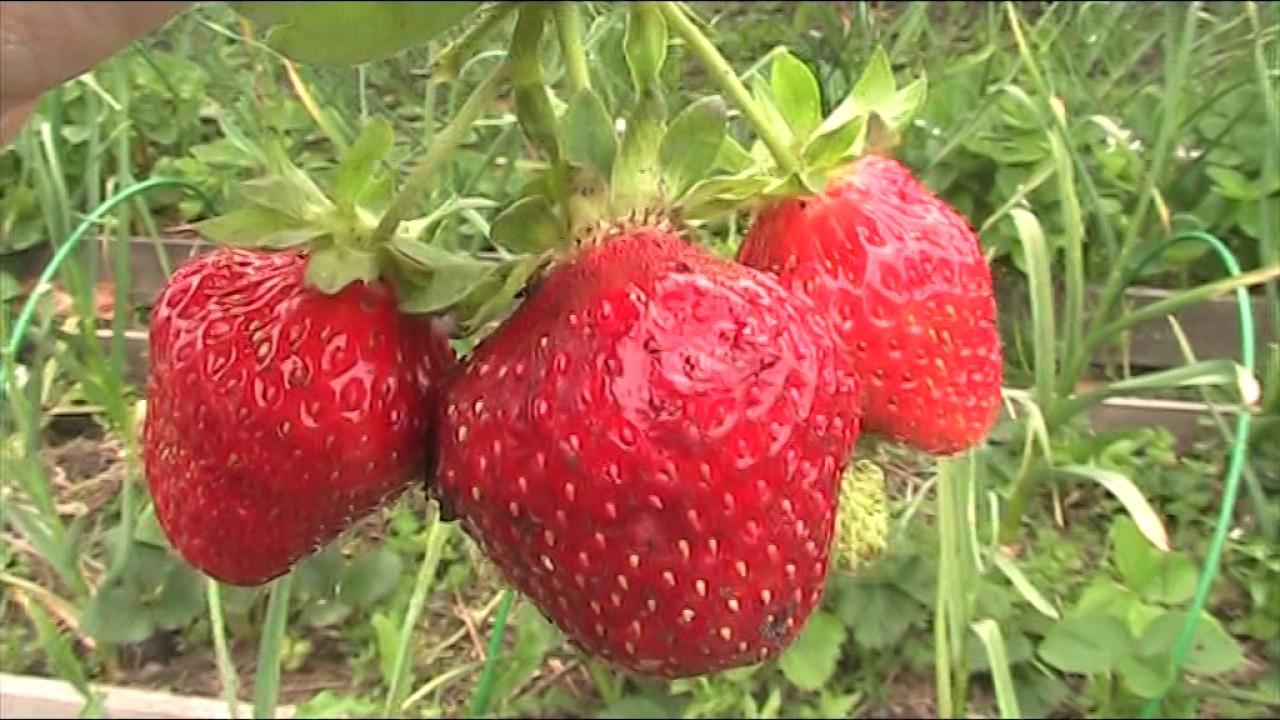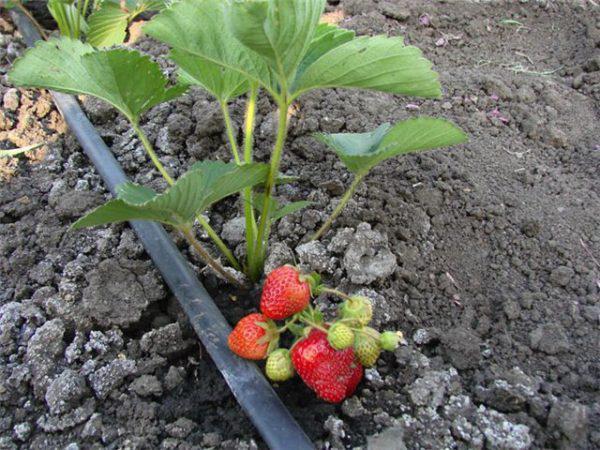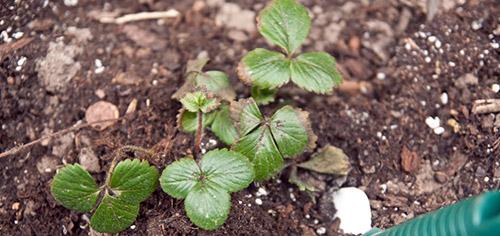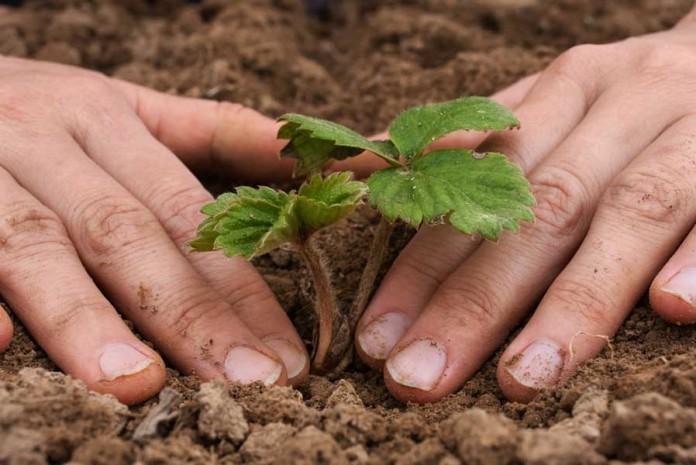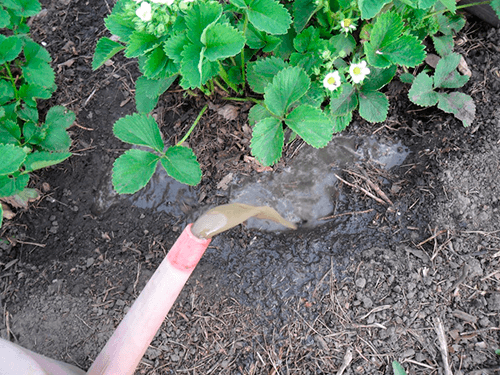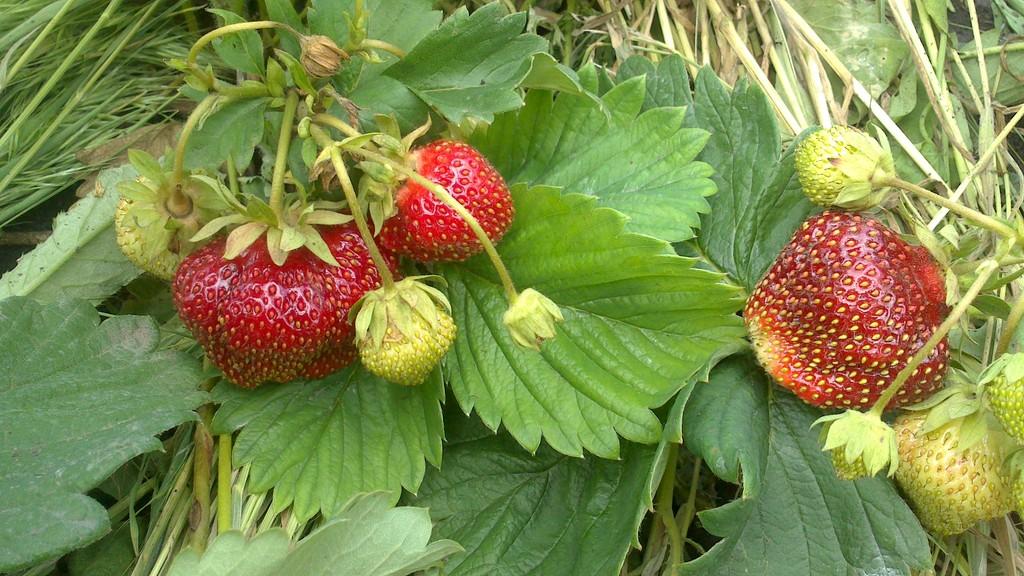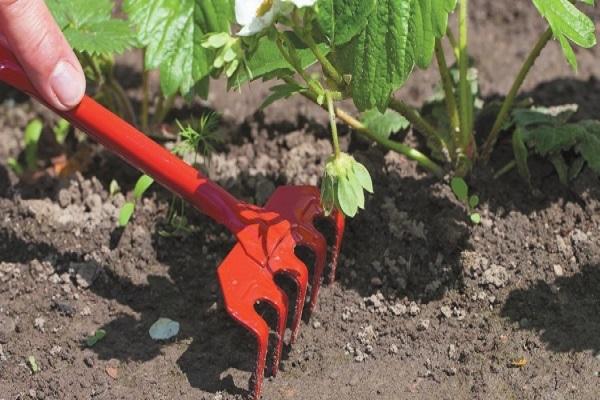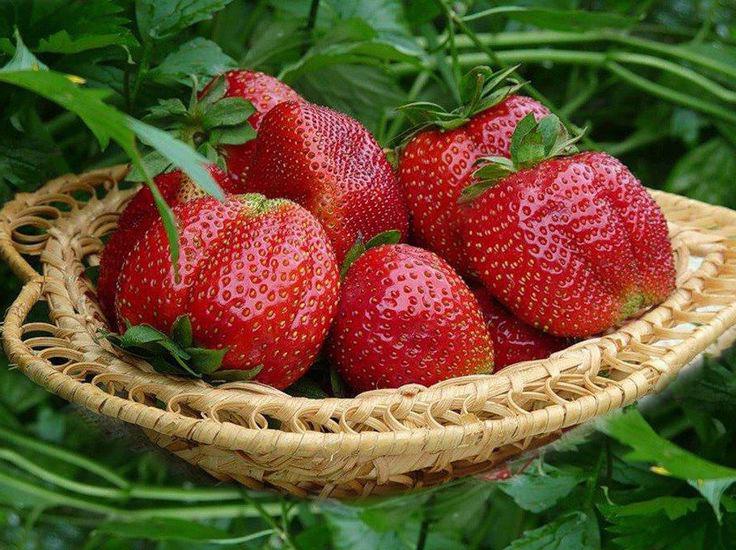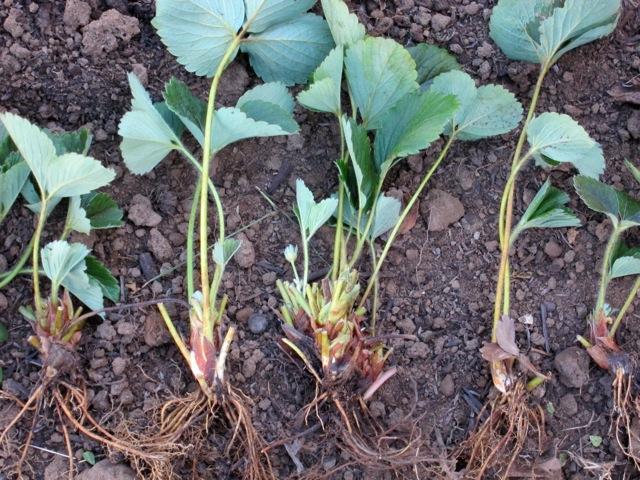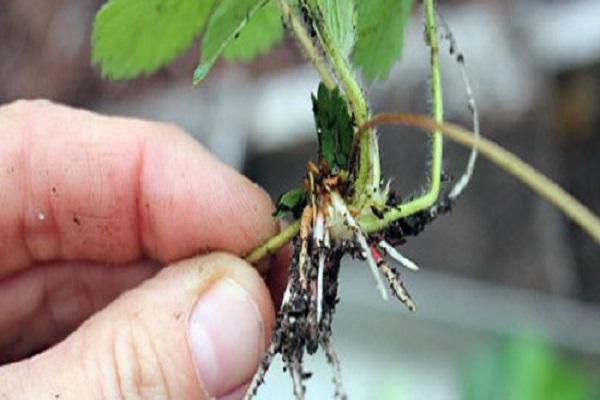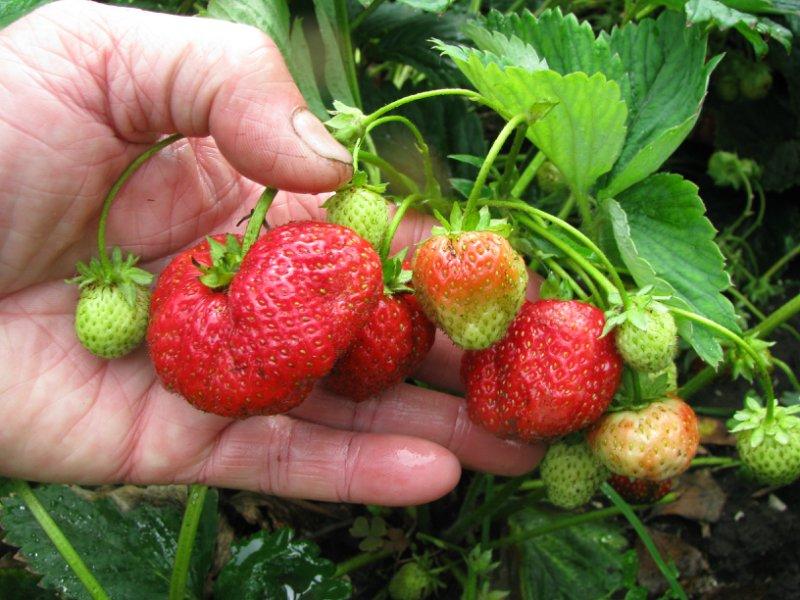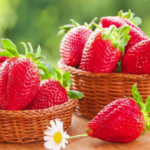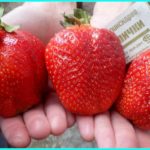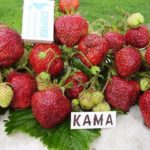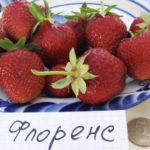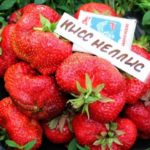The plot would not be a garden if strawberries did not grow in it. Every gardener dreams of developing a variety that produces the largest berries and the largest harvest. At the same time, it would be resistant to diseases and pests, would not freeze in winter, would not fade in the sun, and, in general, would be easy to care for. This species exists, and it is the Mashenka variety strawberry.
- Description and characteristics of Mashenka strawberries
- Positive and negative sides
- How to grow this variety
- Landing dates
- Soil preparation
- Planting material
- Landing technology
- Nuances of caring for strawberries
- Moistening the beds
- Application of fertilizing and fertilizers
- Mulching the soil
- Weeding and loosening the soil
- Preparing for winter
- How to propagate the crop correctly?
- Mustache
- Seeds
- Dividing the bush
- Plant diseases and pests
- Cleaning and storage
Description and characteristics of Mashenka strawberries
The variety is mid-season, tall. The height of the bushes reaches 45 cm, which is a distinctive feature among the variety of strawberry varieties. The bushes are compact, slightly spreading. The inflorescences are complex, sometimes 2-3 flowers grow together into one, this indicates the future irregular shape of the berry. The foliage is quite large, with strongly dissected edges, dark green. Each leaf is located on a thick petiole.
Strawberry fruits from the “very large” section, in the first year of fruiting reach 130 g, in subsequent years a little less - up to 110 g. The shape of the berries is irregular, as if they were folded into an accordion and then straightened out. There are no voids inside, the flesh is juicy, the color is dark red. The taste is excellent, dessert-like. At technical ripeness, the berries have yellow seeds that are slightly buried in the pulp. The pulp of the fruit is very dense, which is why they can be transported over long distances, but only if sepals are present.
Positive and negative sides
Having studied the detailed description of strawberries of the Mashenka variety, we can highlight the main positive characteristics:
- High yield up to 800-1000 g per bush.
- With good care, you can get two harvests per season.
- Excellent resistance to pests and diseases.
- Easy to care for.
- Large-fruited strawberries.
- Operation of a strawberry bed lasts up to 4 years.
If there are pros, then there must be cons. They are as follows:
- Low frost resistance. Below -16 degrees, the Mashenka strawberry freezes, so it requires winter shelter.
- Due to the heaviness of the fruit, the branches often sink to the ground, which can lead to rotting of the berries.
- The variety does not tolerate scorching sunlight and requires shading.
- For the Northern and Central regions, as well as Siberia, it is not suitable for cultivation due to cold winters.
But despite the presence of negative aspects, the Mashenka type of strawberry is popular among gardeners and is the basis for the development of other varieties. The main feature for breeders is large fruit, which they try to convey.
How to grow this variety
Growing strawberries Mashenka is not difficult. Everything should go according to the usual scheme: choosing a site, preparing beds and seedlings, further care. In addition, the variety is absolutely unpretentious to care. No time or effort required. Strawberries are great for growing in a country house outside the city.
Landing dates
Like any other, this variety of strawberries can be planted both in spring and autumn. But this is the case if the seedlings have an open root system. It is important that the planted young plants have time to take root and gain nutrients for future wintering. In spring - April, May. In autumn - end of September, beginning of October. The autumn months should be chosen depending on the weather conditions.
Important! Spring planting can produce a harvest the same year.
If the plant was purchased in containers, then there is no specific planting time. Plant at any time, since the plant is already adapted to the soil.
Soil preparation
Having chosen a site for a garden bed, you need to properly prepare the soil on it:
- The earth is dug up with the addition of drugs against pests and diseases that may be present in it.
- Add 5 kg of sand and 15 kg of humus per 1 m2 to the soil2, loosen or level with a rake. You can also add compost.
- Nitrogen and phosphorus fertilizers, as well as mineral complexes containing potassium and magnesium, are applied to the territory of the ridge. They are scattered evenly over the entire area.Dosage in accordance with the instructions for fruit and berry crops.
- If the acidity of the soil is high, add wood ash to reduce it.
Important! Each element of mineral fertilizers plays its role when growing strawberries: phosphorus is responsible for the development of roots, nitrogen activates the growth of green mass of strawberries, potassium prevents disease damage.
Planting material
The future of Mashenka’s strawberries depends on the quality of planting material. If you have a couple of mother bushes, you can propagate it yourself; just take the lateral shoots that form on the side shoots or tendrils.
You can buy varietal strawberries in nurseries or gardening centers. Each young bush should have up to 6 true leaves without visible damage. They should look juicy and green. It is better not to buy a plant with dry roots. For better adaptation on the site, it is better to buy strawberries in cups.
The central bud should be quite thick, this indicates the presence of a flower bud. Such seedlings can bear fruit in the first year of planting.
Landing technology
The best place for growing Mashenka strawberries is considered to be a well-lit area, where direct rays of the sun, strong winds and excess moisture do not fall. Due to the large size of strawberry bushes, it is necessary to maintain a distance between neighboring plants of up to 50 cm. The abundance of space will subsequently affect the size of the fruit. Half a meter is also left between rows.
Important! Planting begins in cloudy weather, so Mashenka’s strawberries will better withstand stress.
When a seedling is planted in a hole, the root system is carefully straightened, and the main bud is left above the ground. Then water generously and sprinkle with mulch to prevent moisture from evaporating.
Nuances of caring for strawberries
Mashenka was bred a long time ago, when the technology of growing on agrofibre or film was not used, so she does not require special care conditions.
Moistening the beds
Garden strawberry Mashenka loves regular drip watering, but does not tolerate severe waterlogging of the soil, like other varieties of this berry. Excess moisture is dangerous for the roots. There are several rules for watering strawberries:
- Before flowering, strawberries can be moistened with a hose and sprayer. Water getting on the foliage is not a problem.
- During flowering, water from a watering can at the root, avoiding water getting on the flowers so as not to wash off the pollen.
- During fruit ripening, irrigation is reduced and watered as the soil dries out.
Important! Make sure that water is not splashed onto the berries, otherwise they will lose their taste and aroma and become watery.
Application of fertilizing and fertilizers
In order for Mashenka’s strawberries to please you with an abundance of harvest, it is important to apply fertilizers, especially at the time of its active growth. The stronger the bush, the larger the berry will be:
- After the first leaves appear, add nitroammophoska (1 tablespoon per 10-liter bucket of water).
- In the green berries phase, add a mixture of ammonium nitrate and potassium sulfate (1 teaspoon of one and the other fertilizer per 10-liter bucket of water). Water under the bush.
- In the technical ripeness phase, a solution of potassium nitrate or wood ash is used (2 tablespoons of nitrate or 100 grams of ash per 10-liter bucket of water).
- In spring, the beds are sprinkled with organic matter: humus, compost.
Mulch also plays the role of fertilizer. If the beds are sprinkled with it after planting, then during the loosening process it will fall into the ground and will rot, forming organic fertilizers.
Mulching the soil
Mulching is very important for strawberries.The beds are covered with it after planting to preserve moisture from evaporation. At the moment of fruit growth, the ground is covered with dry sawdust or moss so that, sinking from the weight, the berries do not rot. After watering adult strawberry bushes, mulch protects the roots from overheating.
Weeding and loosening the soil
Plantings should be weeded and loosened in cloudy weather, when the soil is slightly moist. This will cause less damage to the root system. Using a special hoe for loosening, they pass around the bushes and between the rows, trying to cut off all the weeds. If roots are exposed during watering, they are hilled up.
Important! To avoid damaging the roots, you should not weed the strawberry beds before covering them for the winter.
Preparing for winter
The description of strawberries of the Mashenka variety indicates low resistance to winter temperatures. It cannot withstand frosts below -20 degrees, which means it requires shelter. If the area is dominated by a lot of snow, then this technique can be neglected.
If the winters in the growing region have little snow, then the strawberries need to be covered. As a covering material, you can use spruce branches of coniferous trees, straw, plant tops (not weeds), and agrofibre.
How to propagate the crop correctly?
Any of the chosen methods of propagating garden strawberries is correct. Mashenka is propagated in three ways. In any case, varietal characteristics are preserved.
Mustache
The most popular and sought after method. They choose the healthiest strawberry bush and leave a mustache on it. During development, the resulting daughter rosettes are cared for as the main bush.
When the offspring take root well, they are dug up and transplanted to a new bed. The first two stepsons from the queen cell are considered the best; usually there are three of them. The outermost rosette does not have time to fully form during the season.
Seeds
The most labor-intensive method of propagating strawberries, which breeders use to develop new varieties or improve existing characteristics. In early spring, the seeds are grown for seedlings under a film. After the first leaves appear, strawberry seedlings dive, and with the onset of stable warm weather they are planted in open ground.
Dividing the bush
When the beds are very thick, in order not to throw away part of the overgrown bush, it is replanted, thereby obtaining additional planting material. Here it is important to correctly cut off the “extra” part. Using a sharp knife, divide the strawberry bush so that it has roots and leaves, as well as a central bud.
Plant diseases and pests
Despite the fact that the garden strawberry Mashenka is resistant to diseases and pests, they appear due to improper agricultural practices. To avoid this, you must follow these recommendations:
- It is better to place the bed on the ground where radishes, parsley, garlic, lupine, and cereals previously grew.
- Apply medications against diseases and pests when preparing the soil for planting.
- Treat strawberries with fungicides and insecticides in a timely manner.
- Do not leave weeds and leaves near strawberries in the fall, as they may contain larvae and bacteria.
- Do not plant strawberries near nightshade plants.
- Avoid contact of fruits with soil.
Mashenka's strawberries are very large; if they are not protected, they can rot, be subject to late blight, and gray rot. Frequent visitors to the fruit crop are slugs, snails, and click beetles, which are not averse to eating the sweet pulp.
Cleaning and storage
The first harvest begins at the end of June, beginning of July.They should be picked in the morning, in cloudy weather, so that the berries are the most juicy. For collection, use wicker baskets or plastic containers. It is necessary to collect no more than two kilograms in each of them, otherwise the goods will be wrinkled. Another condition for preserving the integrity of the berries is the presence of the stalk and sepals.
The berries are not suitable for canning, but are excellently used frozen for making compotes, jams, marmalade and other desserts.
Strawberries Mashenka are loved and in demand among gardeners due to their size. Some fruits are comparable in size to a chicken egg. There are no copies smaller than 40 grams. The ease of planting and subsequent care is also an important argument for planting the Mashenka variety on your site.

